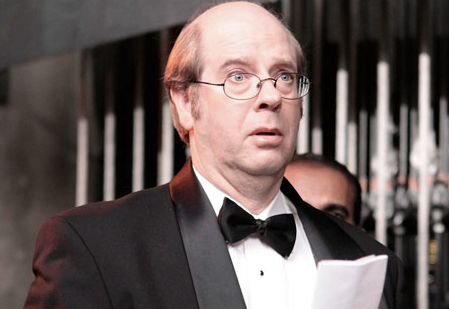The Problem with the New Culture War is Being on the Side of the $50,000 Fish Tank

Within a stone’s throw* of Ground Zero, Manhattanites are building $50,000 fish tanks so they can watch thousands of dollars worth of fish swim around. This fun ’n’ lurid offense against the dignity of hominids and aquatic vertebrate alike is the subject of an adorable story that we should probably designate as When People Have Too Much Inequitably Distributed Wealth Here At The End Of Civilization, Chapter 54. (This is what’s often terrific about the Times’ “Home & Garden” section, by the way-it adroitly handles rich people topics that Styles too often gets all tangled up in, what with Styles’ trademark combination of resentment and lust.) So in their $4.1 million two-bedroom, which will probably retain some of that purchase price’s value, our gays like Ryan Nickulas are living the dream of inventing new ways to spend their money. (To be fair, those sort of gays also give money to gay homeless youth programs! So!) Anyway, it’s fascinating how this sort of thing comes to pass, and more fascinating to note that luxury spending of the recent past is un-regretted-and that current luxury spending is chugging along just fine. The other day a luxury car dealer told me that he had just sold a $1.5 million two-tone Maybach convertible. (Mmm hmm, the back half opens up.) That just isn’t right. But the real problem with all this is since everything is all Us V. Them Culture War right now, we have to be on the side of the fish tank owners. I guess? (I mean, did you or did you not recently spend $9 to $12 on a cocktail, my dear New Yorkers, in what would have been the shadows of the Twin Towers* ?) Complicated!
Forbes' 2010 "Hip-Hop Cash Kings" List, With Musical Accompaniment

You might not know it from the way that they dress or the kinds of cars they drive, but some rap music artists make a very respectable living. Forbes magazine, in fact, has made an annual tradition out of their listing the biggest earners in the field. This year’s edition came out this week. But it’s important to remember that these artists also make music. So here’s Forbes’ list, augmented by each of these very wealthy individual’s best recorded musical performance.
1) Jay-Z
2) Diddy
3) Akon
4) Lil Wayne
5) Dr. Dre
6) Ludacris
7) Snoop Dogg
8) Timbaland
9) Pharrell Williams
10) Kanye West
11) Drake
12) T.I.
13) Swizz Beatz
14) Eminem
15) 50 Cent
16) Young Jeezy
17) Common
18) Soulja Boy
19) T-Pain
20) Lil Jon
21) Gucci Mane
22) Rick Ross
Celebrities Behind Bars! A Comprehensive Study of Bad Behavior and Forgiveness
by O. C. Ugwu
As reliable as March Madness or a fall fashion issue, every year the American public is rocked in its mores by several extremely high-profile displays of bad behavior on the part of our own faithfully erected idols. When one of these events occurs-say, the dramatic exposure of Janet Jackson’s nipple during the most watched television event of the year, or the release of blood-curdling phone conversations with Mel Gibson-there are always two competing impulses: outrage and tolerance. Over time, as both the celebrity and the public go on about their lives (and the publicists go on about their damage control) and the full nature and context of the mishap settles in, one of these impulses wins out over the other. Either tolerance creeps in (“It’s just a nipple”) or the stubborn embers of disgust refuse to die out (“He’s a monster!”).
This summer, as I watched Chris Brown stage tears during no less than a tribute to Michael Jackson at the BET Awards, and sat by the computer screen as Lindsay Lohan prepared to go to prison yet again, I thought that there must be some sense to all of this.
In the court of public opinion, Michael Jackson is widely judged to have been a curiously sexed child molester, yet the outpouring of love for him even during his trials and after death seems virtually unrivaled by that of any other public figure. If there is some criterion for surviving your crimes while in the public eye, young Brown and Lohan simply must not have met it.
By taking a closer look at the recent history of celebrity scandals and the public reaction to them, we can gain some insight into what behaviors Americans consider tolerable and from whom. Working with my friend and colleague, the graphic designer Matthew Goodrich, I set out to map this fertile terrain as clearly and definitively as possible.
The Process
Instances of public figures behaving badly are legion. (What would any celebrity be without the “Controversy” section of his or her Wikipedia page?) I settled on a diverse set of 30 of the biggest offenses and offenders, dating back to Jane Fonda in 1972. I then began to break down the dimensions of each scandal by observing whether the offender had been “forgiven,” “unforgiven” or left “on the fence,” while taking into account important factors like their level of celebrity status, the severity of the offense and whether or not the celebrity was convicted in an actual court of law.
Forgiveness, of course, is a relative term. In this case I looked to the free market and the press for definitive evidence. The questions used to determine the forgiveness metric were: “How has the public at large responded to the celebrity’s work (movies, albums, endorsements, etc.) after the scandal?” And, “What is the tone of current media coverage?” In some places those diverged. (Notably: Roman Polanski, who completely meets the first criteria but not the second.) Those deemed “on the fence” often committed their offenses too recently, or have not yet produced enough work to be sufficiently judged.
For level of celebrity status, I considered achievements in the offender’s field (Platinum albums, Grammys; blockbuster films, Academy Awards; Championship rings, world records; level of public office held, and so on) and general name recognition. Celebrities were ranked on a 4-point scale ranging from A-List to D-List. (It is important to note that celebrity status does not refer to present status, but status at the time of the offense. Often infamy increased a celebrity’s status.)
Severity of offense is tricky to measure. But, as in every case, I sought some level of objective standard. For ranking each offense, the questions asked were: “What do our laws have to say about this?” And “How uncomfortable would the average person be if they knew someone who had committed this offense lived next door to them?” For those whose offense is a recognized federal crime, placement on the spectrum was influenced by the severity of punishment recommended by the United States government in the United States Sentencing Commission Guidelines of 2009.

Conclusions
The old saying goes, “To err is human; to forgive, divine.” But even faced with moral crises as messy and mercurial as R. Kelly’s laundry, people seem to reserve a unique capacity for forgiving the famous. Of the 30 celebrity offenders considered, 19 were “forgiven” or “on the fence” while only 11 remained “Unforgiven.”
Though jurors on the court of public opinion are inconsistent (good ol’ Tom Cruise can’t get a break), examining the graphical representation of the data makes certain trends clear.
• Charges of violence (against people or animals) are more devastating than charges of sexual impropriety, for example.
• Certain offenses, though not actually criminal, are particularly lethal for the reputation (racism, hypocrisy).
• And women got off more frequently than men (2/3 forgiven, compared to 1/2). (That may have to do with the fact that no women were accused of dogfighting or hiring prostitutes.)
• The biggest factor determining whether an offender was re-embraced by the public, however, was celebrity status. The bigger they are, the softer they fall. The “Forgiven” column is dominated by A-Listers, suggesting that public figures can insure against almost any indiscretion by winning over a quorum of hearts and minds beforehand.
Perhaps the wise cultural arbiter Dave Chapelle put it best, in making the case for Michael Jackson: “He made Thriller! Thriller.”
O. C. Ugwu is a writer with one and a half credits in statistics. He lives in Brooklyn.
Matthew Goodrich is an excellent graphic designer, who has better things to do. He also lives in Brooklyn.
How To Cook A Bolognese Sauce

Brendan Koerner points us to what he calls “the fluffiest newspaper article ever.” It is headlined, “Bolognese a sauce of optimism,” so you can kind of see his point. But forget about that. Have I ever shared my recipe for Bolognese with you? I have not? Well, it is a terrific recipe, passed down through an unbroken chain of Italian grandmothers and one of the first things I remember watching my own Italian grandmother make. It is not at all difficult, and is not particularly labor-intensive, unless you find chopping and stirring to be labor-intensive. You ready to learn? Let’s do it! Vegetarians will want to go somewhere else about now.
Cover the bottom of a big pot with olive oil. Set the burner to medium heat. Get an onion and chop it up. White or yellow, whatever, it’s your call. Just don’t use red, because the only thing red onions are good for is salad. Anyway, toss the onion into the oil and stir it around for a few minutes. Two or three should do it.
Chop a carrot and a couple stalks of celery into the tiniest pieces you can. Trim and clean these first, obviously. Actually, if I need to tell you that, stop reading now and go buy a jar of Bolognese from the grocery, because that’s all you deserve. Dump ’em in and stir them around for another couple minutes. Everything should be soft and mushy but not exactly brown. You’re doing great!
Take a thin slice of ham or roast pork (or prosciutto if you really want to be fancy. Look at you, Mr. or Mrs. Moneybags! You can afford a meat that starts at $25 bucks a pound. Or at least it should. I certainly hope you’re not using domestic prosciutto. That’s just wrong, and it offends the Italian part of me. Anyway, if this is the way you’re going to go, use a couple of slices.) Sliver it and saute for a minute or two.
Now it’s time for the ground meat. A word here: Even I, who will put pretty much anything into my body without regard for origin or cleanliness, am extremely cautious about ground meat, because a lot of it is filled with what scientists refer to as “doody.” You should probably buy it from somewhere you trust, and preferably somewhere you can watch them actually grind it up. Either way-hey, you want to eat what scientists refer to as “doody,” you go ahead, I’m just saying is all-you’re going to need about two pounds of it. I’m partial to all beef. You can do a beef/veal/pork blend if you like, but beef should predominate. (If you have problems with veal, I understand. It’s terrible what they do to those little baby cows who will never get the chance to grow up to be big cows. Still, I think it’s nice when they can all wind up in the same sauce together.) Put the meat in and mix it around for about five minutes or so. Don’t overcook, by which I mean you do not want it to look like it is something you are ready to eat right now. Keep it pinkish.
Liquid time. Get a cup of dry white wine (if you don’t have any, a cup of dry vermouth will do. Hell, I’ve used a cup of red wine before and the difference has not been particularly notable.) and pour it in. Stir occasionally, but let the meat “drink” the wine so that it kind of evaporates into the mix. Figure a couple of minutes on this one. Next you’re gonna take a cup of milk and do the same thing. Here’s the part where the old Italian ladies will tell you that the milk should be hot, but I think this is something they make up just to keep you busy and show that they’re in control. It doesn’t matter what temperature the milk is, it’s all gonna wind up in the meat all the same. You hear that, nonna? It doesn’t matter. When the milk is gone (it’ll take longer than the wine did) add another cup of wine, same deal as before.
[A NOTE FOR THOSE OF YOU WHO DO NOT LIKE TO COOK WITH ALCOHOL: You’ve got your reasons, I guess. I’m not gonna judge. You can replace the wine with beef stock. BUT, the beef stock should absolutely be made fresh. Nothing from the store, got it? I would have given you my personal recipe for beef stock had I thought about this in advance, but the idea of a life without alcohol is so alien to me that I only just now remembered that there are some people who swing that way. I’m sure there plenty of good recipes on the Internet. Good luck.]
Finally, the tomatoes. Figure out how thick you want your sauce. You want it ragu style? Get one can. You want it a little more liquidy? Two cans. Either way, you are REQUIRED BY ME to be using a 28 ounce can (or cans) of whole, peeled San Marzano tomatoes. In this matter there can be no dispute. If you find yourself unable or unwilling to use San Marzano tomatoes I refuse to allow you to make my Bolognese. Seriously. Get out of the kitchen and go take a good, hard look at yourself in the mirror. Ask yourself, “Why am I such a fuckhead that I refuse to use San Marzano tomatoes? Am I the sorriest son of a bitch God ever put upon His green earth?” Nod twice to confirm to yourself that you are. Then go to the Olive Garden, because you’ll almost certainly love it, and after the realization that you are the sorriest son of a bitch God ever put upon His green earth you could probably use some cheering up.
The tomatoes go in the blender. Pulse them until the consistency is mostly juice, with a few chunks remaining for character. Pour it into the pot and swish everything together. Add a shitload of salt (or slightly less if you’re not trying to give yourself an aneurysm like I am) and a couple of bay leaves (don’t forget to take them out at the end, because there are few things more unpleasant than getting an errant bay leaf caught in your throat) and drop the heat down to low. You wanna let this simmer for three hours or so. Check back every thirty minutes and give a little stir. You’ll probably have a sense of when it’s ready. If you’re going on 4 hours you’re almost certainly done and may have even fucked things up, but it’s really difficult to ruin this sauce, so more than likely you can pull it out. Serve over whatever pasta you like (a thick noodle is best) and freeze what you don’t use. This also makes a more-than-decent replacement for regular tomato sauce in pizza.
There. Was that so hard? Don’t thank me, thank my grandma. Who is dead. (But not from this sauce.) But if she were here I’m sure she would be happy to tell you you were welcome, right before she told you how you were doing it wrong. Old Italian grandmas. Always with the correcting. I guess that’s one of the things we love about them. Anyway, enjoy.
Notes from Mexico City: Software Piracy as a Measure of Societal Progress
by Joshua Heller

I love Latin America. I’m not sure if it’s the food, the people, the culture or its vibrant collection of knockoffs.
I’m also not sure why I’m so passionate about fake things. Maybe it’s the mockery of consumer capitalism, or the satisfaction of the common man owning something he could never afford. I own a fake Adidas jumpsuit from La Paz. A pair of Phony (brand) headphones from Bogota. And a copy of Avatar filmed during a 3D screening.
And so I was delighted the other week, when I went to Mexico City for the sixteenth time.
I spent my time in the largest city in the Americas eating gourmet Mexican cuisine, discovering clandestine mezcalerias, cheerfully walking along the wide paseos.
Mexico City is definitely not as scary as you think it is. The taxi cab kidnappings and narco-executions-many of which are taking place further to the north-are eclipsed in Mexico City by a more ubiquitous crime… the crime against intellectual property.
Around the corner from Palacio Bellas Artes, Mexico City’s most revered cultural institution, merchants line the street to sell less esteemed populist art.
Vendors have hawked MP3 CDs and DVDs at this intersection for years, but on this trip I witnessed something new. For the first time, people were selling counterfeit software.
“¡Compra! ¡Compra! ¡Encarta! ¡Windows Vista! ¡Fotoshop!”
The corner of Lazaro Cardenas and Uruguay is the epicenter of the counterfeit consumer electronics sector of Colonia Centro Historico. It’s east of the light fixture district, and just past the blender repair zone. Here you can purchase any program that you’d ever want to torrent for fewer than 60 pesos.
I’m not really sure what a pirated copy of “YouTube” looks like, but these men with binders full of PC software make a living selling these products to passers-by.

This industry says a lot about Mexican use of technology.
For at least one thing, as software pirates become more visible on the street, we can assume that more people have computers in their homes.
A government study concludes that home computer ownership has increased from 18.6% in 2005 to 26.8% in 2009. Not all PC owners will buy their software on the street, but many can only afford to buy from the piratas.
Some might be historically economically disadvantaged, and/or others are likely too young to have a disposable income, since 70.5% of home computer users are between the ages of 12–17.
Many of those kids are playing World of Warcraft, though I suspect some are cultivating something more substantial than hit points.
Vendors hawk hundreds of programs that fuel the 21st century’s learning explosion. Pirated titles like Corel Draw, AutoCad, and Fruityloops make me wonder if we’ll see a surge of graphic designers, architects and musicians. When more people have access to technology, more people have access to knowledge and platforms for innovation.
Maybe piracy can even stimulate America’s so-called “Creativity Crisis.”
Though I didn’t have use for a pirated copy of ¡Aprende Ingles! I did leave Mexico with something to add to my counterfeit collection: this fake torta.
Joshua Heller knows that Oaxaca is the new Bushwick. He was just in New York but now he’s in L.A.!
Drug Grower Forces Bears To Act Like Common Dogs

Bad news, bears: “Royal Canadian Mounted Police raiding a British Columbia pot-growing operation got a big surprise two weeks ago. As they approached the estimated 1,000-plant grow, near Christina Lake about 220 miles east of Vancouver, a number of black bears approached. Officers soon realized the bears were tame, having apparently been fed by the grower (for years, according to a neighbor) in an effort to deter theft. ‘One of [the bears] jumped on our unmarked car for a while. But it soon became apparent they were habituated to the grow operation,’ said RCMP Sgt. Fred Mansveld.” This story is even better if you watch the video here, wherein the mayor of nearby Grand Forks tells the local legend of “the bear lady” and suggests that she might actually have been growing the pot in order to help pay for the bears’ food.
Happy Chicks Voting Day!
90 years ago today the 19th amendment to the United States Constitution, guaranteeing women’s suffrage, was ratified. On behalf of the gender which overwhelmingly tends to vote for the most destructive loon on the ballot, I would like to thank you ladies for doing your best to help save us from ourselves. Hopefully you’ll turn out come November, because, man, we’re really gonna need you this time.
Haiti's Would-Be Savior Hiding in Secret Haitian Location

Haiti has postponed its election certification! Now we won’t know until Friday who of the 36 applicants may be allowed to run. (The criteria in Haiti to run for president includes owning property, which is sort of gross. Also you have to have lived in the country for five years, which seems reasonable!) But there’s a problem! Celebrity would-be candidate Wyclef Jean “said he is in hiding after receiving death threats. In an exchange of emails, the singer told the Associated Press that he was at a secret location in Haiti.” So you know, being the president would definitely work out for him then.
El-P, "Time Won't Tell"
I’m not always a big one for instrumental music. My mind starts to wander if someone isn’t singing or shouting at me. But this track from rapper/producer/Def Jux Records founder El-P is excellent in a way that would be like if Dan the Automator had gotten Dave Pajo to play on the Dr. Octagon album. And the video, directed by Shan Nelson, is really terrific, too.
Stephen Tobolowsky: The X Factor, Part 2
Stephen Tobolowsky: The X Factor, Part 2
by Stephen Tobolowsky

Are you a subscriber to The Tobolowsky Files? The podcast, a project of actor Stephen Tobolowsky-the youngs will know him as Sandy Ryerson on “Glee” and from “Heroes” and the olds will know him from films as diverse as Groundhog Day, Thelma and Louise and Basic Instinct-with David Chen at Slashfilm, just put out its 38th episode. Writing here, he previously discussed Memento and the thrill of trying out for characters named “Masochistic Gay Man”-today he writes about the adventures of time and the waiting room.
I got an audition with one day’s notice for “Californication,” a comedy on Showtime staring David Duchovny. There was no script to read, just two scenes. I bridled at the idea on not having a clue as to what this character was, but I realized the only weapon I would have is to learn my lines. I got to the casting office the next day and I saw that every older leading man in town had read for this part. It was the ‘gambler’s tell’ that no one my age was working. At first I was overwhelmed at the amount of competition and then I focused on the men that were actually sitting in the room waiting to go in. I knew them all. None of them remembered me. There was John Getz, Daniel Benzali and Peter Strauss.
At one moment I was thinking about the scenes and my lines and now I was sideswiped by memories. John Getz was at least tangentially involved with the first time I ever got fired. It was 1984. I had auditioned for a show called “Maggie Briggs” starring Suzanne Pleshette. John was the leading man. I was visiting Mom and Dad in Dallas when my agent called and told me I got the part. It was my first recurring role. I would be getting $1500 a week to play the religion editor for a news staff. We celebrated when I heard the news. I had been doing children’s theater in the schools with 12th Night Repertory and had a couple small parts on television-until now. This was the first money job I had ever gotten. I had to leave Dallas the next day and get back for rehearsals. I felt like my dream of being a professional actor had been validated right before my parents’ eyes. That was a big deal as many of you can imagine.
I got back to “Maggie Briggs” on the day of the network run-through. I rehearsed that morning with the scenes that I had auditioned with. Everything went smoothly. Then the writers wrote an extra speech for me. It was very funny in a completely nerdish way. We rehearsed the scene with the new speech once before the network people came in. About twenty or so executives came to watch a full rehearsal and evaluate where we were. We started the show from the top. I was in the third scene. Everything was going well until we got to where my new speech had been inserted. I opened my mouth to begin my new funny stuff and John Getz forgot the re-write. He cut me off mid sentence and jumped ahead with the old version of the scene. I stood there looking like I had no idea what I was doing and had made a giant blunder.
Later that day my agent called and told me I was fired. I was crushed. The producers called and said that they were sorry; it was a network decision. They said since I was under contract for this one show if I wanted to get paid, I could stay on-as an extra. They understood that this could be embarrassing for me and they would let me out of my contract. I wouldn’t get paid, but I wouldn’t have to deal with the indignities of facing the rest of the cast and watch someone else play my part.
I said, “Pay me. I’ll be an extra.” I made my $1500 that week. John never said a word to me about skipping over my part during the run through. That was 26 years ago. He was now sitting across from me in the “Californication” waiting room.
Pacing around the room was Daniel Benzali. Here was a happy story. Daniel was the actor originally cast as the power mad Colonel in the sci-fi television movie “Night Visitors” shot in Canada (which I go into in great detail in my story “A Wager with Freddy”). Yes, it was Daniel who was cast to play the lunatic who had to get the alien away from Faith Ford. But Daniel had a fit of good judgment and dropped out of the show.
As a Plan B, the producers called me. I gladly took the job. What was particularly funny was the makeup and costume departments never got the word. They still had Daniel’s 8×10 on the wall as the Colonel. They kept asking me what Steven Bochco was really like and how much they loved me on “Murder One.” I told them I was a different guy. They looked at his picture and then at me. True, we both were bald. I tried to point out that the name and the face were different. They could not understand what I was saying-that I was in fact a different human being than they thought I was. They stared at me as if I was suggesting a sort of “X-Files” transformation had occurred in the hotel. I told them they had been working in Vancouver too long.
Peter Strauss was another story altogether. It was one of those episodes that seemed insignificant at the time but has stayed with me my entire life. It was 1981. I was in Buffalo acting in a play written by my girlfriend, Beth. We got an invitation to come into New York on a day off to see the opening of a play called “Einstein and the Polar Bear.” The play starred Peter Strauss and was directed by J Ranelli, who had previously directed “Crimes of the Heart” in Northern California.
We came into the city and visited J at his apartment. Besides being a wonderful director, he also played the flute. He had a little pet bird that flew freely around the apartment and when J played-in fact, even when J started putting the flute together-the bird seemed absolutely delighted and perched on his shoulder and eventually stood boldly on the end of the instrument.
J seemed very relaxed. He felt the show was in good shape and ready for opening. He started talking to us about life. He said one of the great advantages of being in your forties instead of your twenties is that you tend to take control of your space. You don’t let people push you around anymore.
We went to the play and it was wonderful. I am not exaggerating when I say that the performance was interrupted with applause about two dozen times. Peter Strauss was absolutely heroic playing the J.D. Salinger-like author who had lost his faith in the world. The play ended with a standing ovation that seemed to go on forever. I was so happy for J and for the production. Beth and J and I went out to eat with Peter afterwards. Peter was charming and funny, telling stories. It was a great night in New York.
On the way back to J’s, an overweight woman in tears came up to me and asked for $33.50, the price of a bus ticket to go to Baltimore to see her boyfriend. I gave her the money. Peter was laughing as to what a patsy I was, but we got into a spirited debate as to how she arrived at the exact figure of $33.50. We decided it was the inexactness of her story that gave it validity.
The next day I rushed back to Buffalo and to my own inexact performance at the Studio Arena Theater. In the dressing room, putting on makeup before the show, I told my friend and fellow thespian, Bob, about “Einstein and the Polar Bear” and the evening with Peter Strauss and J Ranelli and the bird that sat on the flute. Bob looked at me hard for a second and tossed the New York Times he was reading in my direction.
“It’s DOA, bro,” he said. “They murdered it.”
I looked at the paper and it was a review from the night before. The play, J, Peter, were destroyed by the review. There was no mention of the laughter or the applause or the standing ovations. I shook my head in disbelief. It made me wonder about J’s theory of the advantages of being forty, and how you are in control of your space and you don’t get pushed around anymore.
In the waiting area, Peter Strauss had just finished his audition and was leaving the room. He was laughing and shook hands with the casting directors. He looked at me but nothing registered. The casting directors smiled pleasantly and said, “Stephen, we’re ready.” I nodded at Peter as he left. I guess he figured I was another “Rich Man, Poor Man” fan-an artifact from decades past.
I sat down in the room and one of the ladies asked the standard, “Any questions?”
I said, “The waiting room’s gotten so hard.”
Felicia, the head of casting, smiled sympathetically. “The nerves-or the folding chairs?”
I laughed. “No. The years. The waiting room has become harder than the audition. I never know whom I’m going to see or what it’ll stir up. I am now carrying three huge memories from my life like giant rocks on my back. And I have brought them in here with me now-to you.”
The ladies leaned forward and said, “Well, now you have to tell us.”
And I did. I told them about the night with Peter and how great he was in a wonderful play and how no one will know because of one horrible review. That night has haunted me for almost thirty years in that it demonstrated that you never know. And all the work and effort and passion you have-can be for nothing.
The ladies became very quiet and sad. I said, “It’s all right. We’re here. And to tell you the truth I think the reason is because we enjoy the leap more than landing safely on the other side.”
I picked up the scene and smiled. “So Felicia-shall we jump?”
The Tobolowsky Files is a project of Stephen Toboloswky and David Chen. You can subscribe through iTunes here or via RSS here. Or, you know, you can just e-mail Stephen at stephentobolowsky(AT)gmail(DOT)com.
